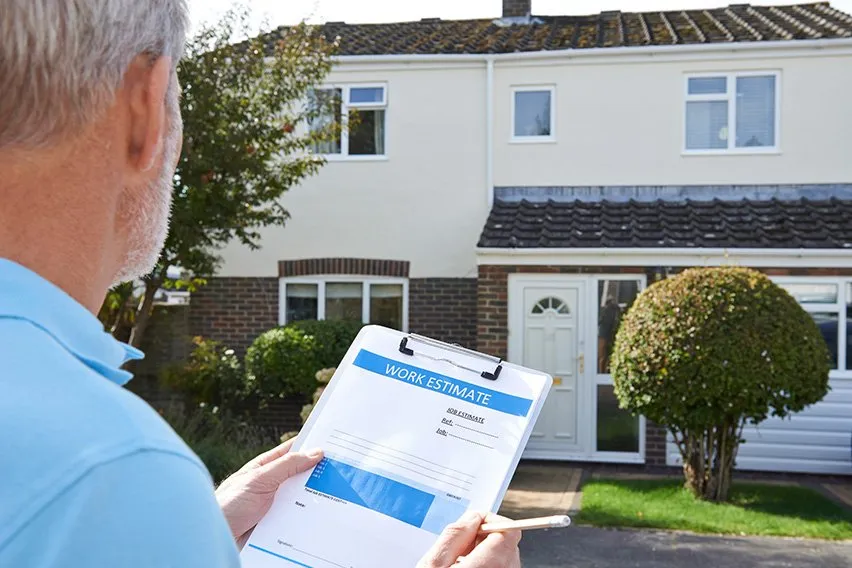How to Price Landscaping Jobs in 7 Steps: A Simple Guide

Knowing how to estimate landscaping jobs correctly is key to running a profitable business. The problem? Coming to an accurate project estimate can be difficult, even for the most seasoned professionals. In the related field of construction, the industry as a whole lost a total of $1.84 trillion globally in 2020 due to bad data (including measurements, material quantities, and cost estimates), according to a survey of more than 3,900 companies.
Learning how to bid on landscaping work accurately will ensure you’re making a profit on every job you do. This, in turn, allows you to make enough money to grow your landscaping business, expand your landscaping services, and take on even better projects.
In this article are 7 steps that illustrate how to price landscaping jobs effectively.
Here’s what we’ll cover:
- 1. Establish a Project Plan
- 2. Calculate Overhead Costs
- 3. Calculate Material Costs
- 4. Calculate Subcontractor Costs
- 5. Calculate Time and Labor Costs
- 6. Add Your Markup
- 7. Calculate the Total Price
- How Much Does a Landscaper Charge Per Hour?
- How Much Does Landscaping Cost Per Square Foot?
- Easier Landscaping Job Estimates with FreshBooks
1. Establish a Project Plan
First things first: Before you start your estimate, talk to the client. Ask lots of questions. The most important question you should ask is about your client’s budget—this will determine whether the job is a good fit for your company and whether to spend time on creating an estimate for the project.
Make sure you visit the job site yourself and measure it. This helps you get a better sense of the space you’ll be working with and discover any issues or upsells to bring to your client’s attention.
Develop a plan to complete the job and decide what kind of materials, subcontractors, and extra labor you may need. Remember that hardscaping will be pricier as you’ll need to build walls, pathways, and other architectural structures.
Consider the following factors and how they factor into your client’s budget:
- Client’s desired landscaping style or design (Japanese, modern, tropical, etc.)
- Features required, like a stone pathway
- Types of plants and materials required
- Location (is it remote?)
- Quality of soil
- Need to remove or add soil
- Sod vs. seeding
- Need to grade or reslope the land
- Current condition of the yard
- Need to get rid of plants or features like a pathway or patio
Landscaping Network has a comprehensive landscaping prices list for specific services, like installing a patio or fence.

2. Calculate Overhead Costs
You must take overhead costs into account to properly price landscaping jobs. You’ll need to recoup the costs for your vehicle expenses, advertising, office rent, equipment repair and maintenance, cell phones, tools, uniforms, accountants, legal fees, internet bills, and business insurance.
Most small businesses underestimate how much they actually spend on overhead. That’s why you need an accurate number. If you don’t, chances are you won’t be making a profit even after you add a markup.
Usually, at least 20% or more of a landscaping contractor’s total sales go toward overhead costs, according to Green Industry Pros.
So, it’s better not to ballpark it. Add up your weekly overhead cost and divide that cost by the number of hours you work per week on average. Add that amount to the job cost based on the estimated number of hours you think the project will take.
3. Calculate Material Costs
You established a project plan in step one, so now it’s easy to figure out the material cost. You should already know exactly what materials you’re including in the job, but you should ask your prospective client whether they’ll be providing any of the materials themselves so you can remove them from your estimate.
Don’t forget to consider material costs like:
- Compost
- Cement
- Lawn seed
- Trees, plants, and other foliage
- Mulch
- Patio pavers
- Lawn treatments
- Floodlights
- Lawnmowers
- Hoses
- Gravel and boulders
- Equipment rentals
Calculate how much you’ll need based on your measurements of the site. Now you have your total materials cost. Add it to the total project costs.
This free landscaping cost calculator will help you estimate the cost of your landscaping project based on the material type and size of the area.
4. Calculate Subcontractor Costs
This part’s simple. Send your trusted subcontractor(s) your project specifications and ask them to quote you a price. Add that price to your total job cost.
5. Calculate Time and Labor Costs
To determine how long it will take you to complete the project, your best source of information is your previous jobs. If you’ve worked on similar projects in the past, it’s a simple matter to take that information and adjust it for your new client’s needs.
If this particular project is new to you, it may be helpful to get feedback from your subcontractors or colleagues in your network. You’ll also want to track the time you spend on your projects (and each stage of your projects), so estimating the time it takes to finish different kinds of jobs becomes easier over time.
Once you’ve determined how long the job will take, add your hourly rate to the equation if you’re the one doing the job. That way, you’ll always get paid. Otherwise, estimate the labor cost for your other employees.
Not sure what to pay your workers? The median hourly wage for landscaping workers is $6.55 nationally, according to Bureau of Labor Statistics records from 2021. The hourly rate ranges from a low of $11.62 to a high of $22.90.
Location definitely factors into the hourly rate of landscaping workers. D.C. pays the most at $22.49 an hour, with Connecticut, Massachusetts, Washington, and Vermont all paying over $19 an hour. California employs the most landscaping workers and pays them an average hourly wage of $19.36.
You also want to add payroll tax costs (FICA) to your total labor cost. About 18 percent extra is a good idea.
6. Add Your Markup
Overhead costs are not part of your markup. Your markup needs to be applied on top of the total cost to you to perform the job. This way, you’ll always be making a profit.
Charge at least a 15% to 20% markup on residential landscaping jobs and 10% to 15% on commercial landscaping jobs, says Lawn & Landscape. Commercial jobs are more competitive, so you need to price them lower to survive.
Maintenance landscaping can charge a 10% to 12% markup for both residential and commercial work.
If you’ve done this type of work before and have gotten great feedback from your clients, consider increasing your profit margin to account for the stellar work you do. Of course, don’t forget to compare your costs to your closest competitors to ensure you maintain a competitive edge.
7. Calculate the Total Price
Add up all your landscaping costs listed in the above steps plus your markup to find the price you’ll quote the customer for their landscaping job.
Remember to add sales tax to the final estimate if your state requires it. Some states, like Nevada, don’t require service-based businesses like landscaping to charge sales tax.
TaxJar has a simple sales tax calculator that estimates your tax rate by street address.
How Much Does a Landscaper Charge Per Hour?
A landscaping company typically charges $45 to $75 per hour for physical labor, according to Fixr. The price range is the same for new landscaping and landscaping maintenance. On the other hand, consultations, planning, and design may go up to $200 per hour.

How Much Does Landscaping Cost Per Square Foot?
Landscaping costs $5 to $20 per square foot on average, according to Fixr.
Here’s an additional landscaping price guide: The national average is $10,000 for a quarter acre of lawn and landscaping. This can go as low as $3,000 for simple sod installation and as high as $20,000 for designer landscaping and hardscaping for man-made features like walls or paths.
Easier Landscaping Job Estimates With FreshBooks
Once you’ve gathered all this information, you’re prepared to create your landscaping estimate.
Of course, the difficulty in pricing landscaping is that each project will differ from the last. But, the more experience you gain, the better the information you have to develop more accurate estimates in the future.
Need a landscaping estimating template? Estimate smarter and faster with FreshBooks’ professional estimating software. Send estimates online in a flash and easily convert them to invoices when the job’s done.
That way, you can focus your efforts on the project at hand, knowing you have a professional, easy-to-replicate document that puts you and your clients on the same page.
RELATED ARTICLES

 How to Estimate Power Washing Jobs in 5 Steps: A Simple Guide for Small Businesses
How to Estimate Power Washing Jobs in 5 Steps: A Simple Guide for Small Businesses How Much Do Painters Charge in 2025?
How Much Do Painters Charge in 2025? How Much Do Web Designers Charge? A Pricing Guide
How Much Do Web Designers Charge? A Pricing Guide How to Write an Estimate in 5 Steps: A Small Business Guide
How to Write an Estimate in 5 Steps: A Small Business Guide 5 Simple Steps to Making Successful Bids: Tips for Small Businesses
5 Simple Steps to Making Successful Bids: Tips for Small Businesses How to Estimate Projects: Top 5 Project Estimation Techniques for Small Businesses
How to Estimate Projects: Top 5 Project Estimation Techniques for Small Businesses